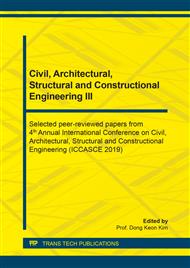p.152
p.157
p.166
p.173
p.179
p.185
p.190
p.195
p.202
Accuracy of Three Bracket Transfer Media for Indirect Bonding Techniques (IDB) Fabricated by Three-Dimensional Printing
Abstract:
To evaluate and compare the accuracy of bracket placement in three bracket transfer media techniques for indirect bonding. A total of 300 brackets were bonded on dental casts by indirect bonding techniques using three different bracket transfer media. The bracket positions were simulated by digital software. In the first two methods, digital models were designed with two types of markers, one with fully mocked up bracket (container method), and another with only marked bracket margins (marker method), then the models were printed out by a three-dimensional (3D) printer using pink resin and bracket transfer trays were vacuum formed on these models with polyvinylsiloxane. In the third methods, digital software was used to design full arch transfer trays, and printed by a stereolithographic 3D printer using elastic resin. With the transfer trays, the brackets were bonded onto dental stone casts, and a 3D model scanner was used to capture the final bracket positions on the casts. Superimpositions between the planned and actual bracket positions were done. Nonparametric statistical analyses were used to determine whether there were significant differences between planned and actual bracket positions and between the three methods. All significant differences in bracket position were less than 0.31 mm and most (95%) were less than 0.08 mm. Significant differences between all three methods were found. Indirect bonding methods using digital software combined with 3D printing show good accuracy with clinically insignificant positional discrepancies of less than 0.5mm.
Info:
Periodical:
Pages:
179-184
Citation:
Online since:
April 2020
Keywords:
Price:
Сopyright:
© 2020 Trans Tech Publications Ltd. All Rights Reserved
Share:
Citation:


